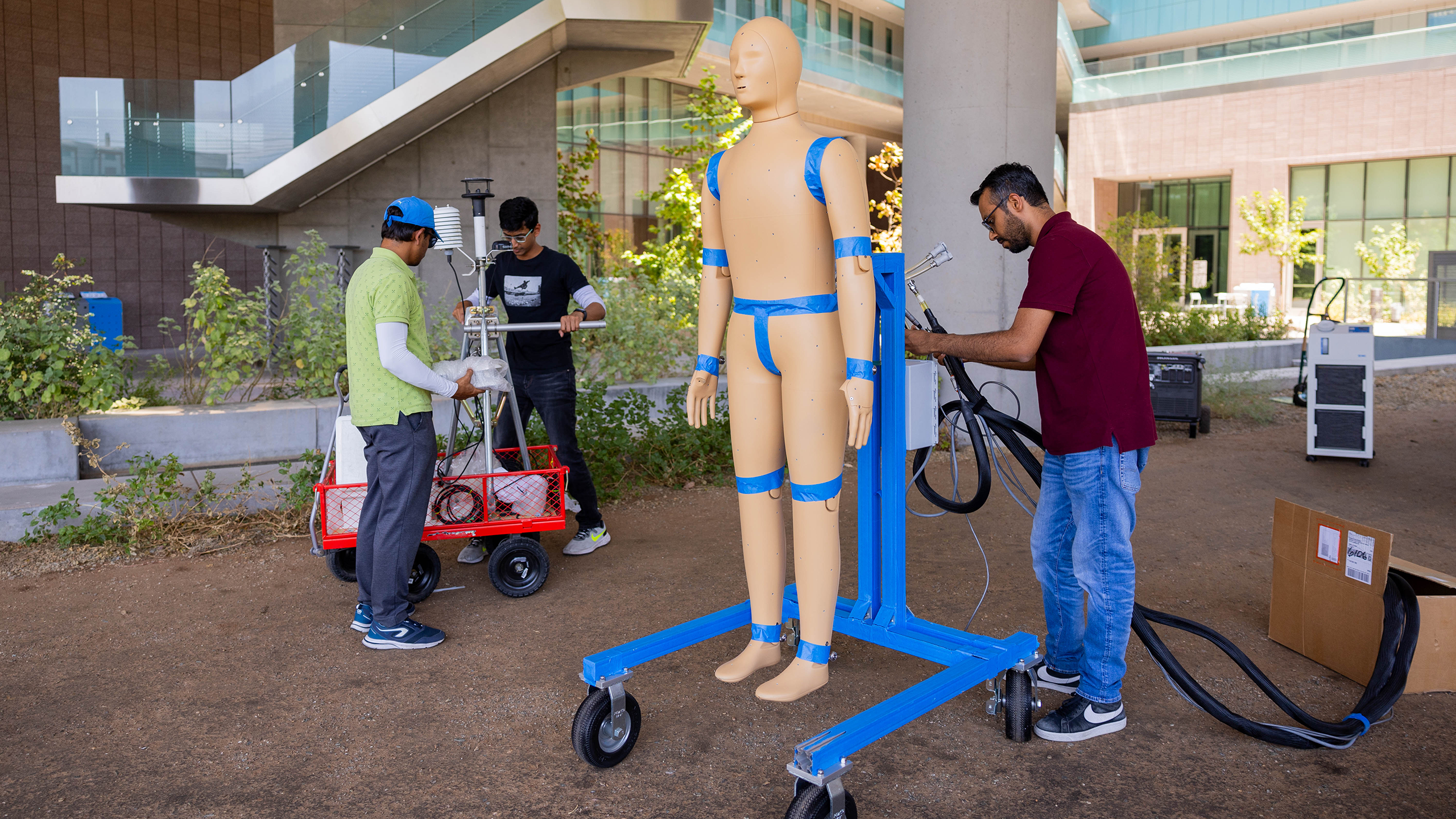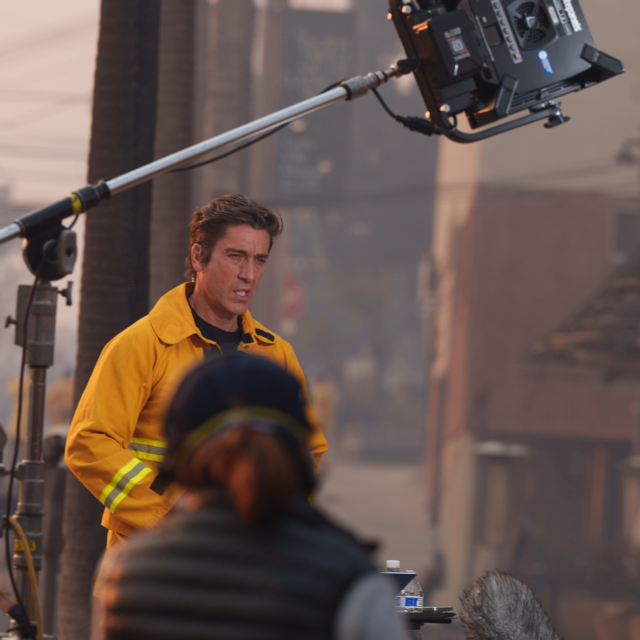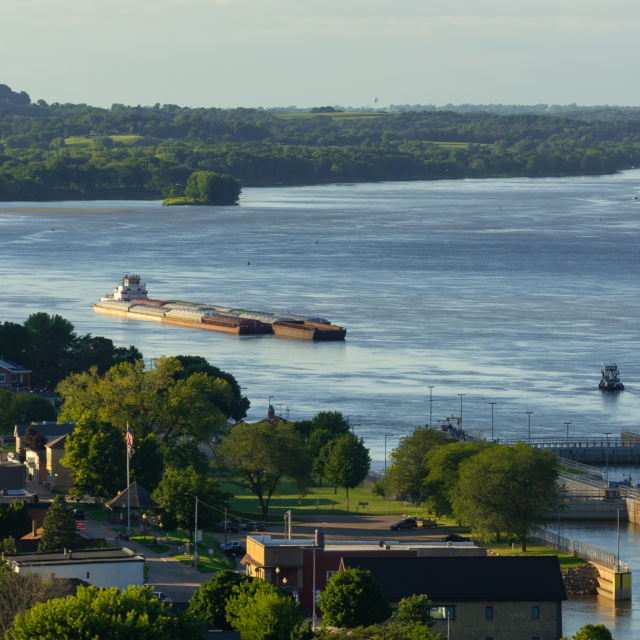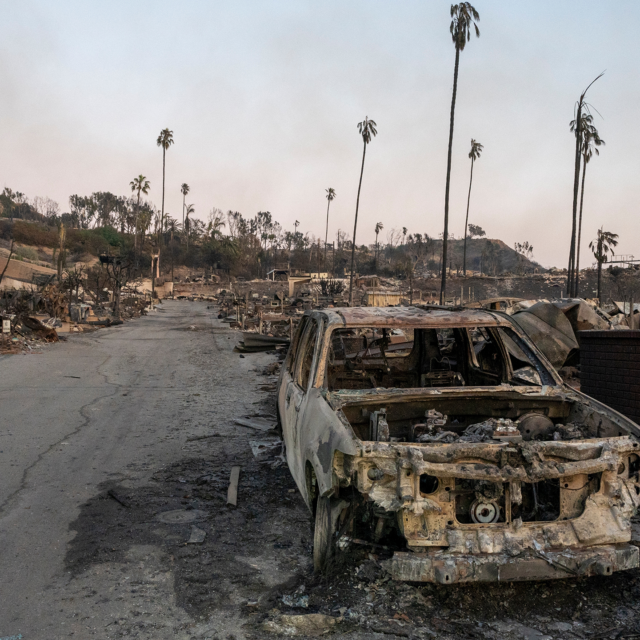Listen and subscribe to us on your favorite podcast platform:
In a place like Phoenix, one of the number-one ways we can improve people’s thermal experiences in the summer is by shading them, by decreasing their overall heat burden, because that sunlight is so intense and we have such clear skies here in our dry climate. And so, part of the city’s portfolio is to add shade in. Not just tree shade using desert adaptive shade species, but built shade…
Jennifer Vanos, associate professor in the School of Sustainability and College of Global Futures at Arizona State University
…It’s honestly much easier to change what you’re wearing than to change your built environment. And that’s another aspect that we’re finally moving into testing with ANDI.
Konrad Rykaczewski, associate professor in the School of Engineering, Matter, Transport and Energy Arizona State University
Phoenix experienced a 113-day streak of temperatures at or over 100 degrees, and an annual average high temperature of 90 degrees in 2024. The city’s extreme heat is the worst in the nation and has equally resulted in staggering increases of climate-related health emergencies and deaths.
Greater resilience to such rising temperatures requires clear, verifiable information that can guide communities in effective decision-making. Researchers at Arizona State University are working to fill this gap, using the Phoenix metro as a laboratory in which to measure, study and document the complex variables that determine thermal risk or safety for humans.
Using novel technologies—like ANDI, the only thermal manikin in the world customized for testing outdoor environments—these scientists are building a detailed understanding of how heat affects the human body under a variety of real-world conditions. The results inform local governments’ urgent heat risk mitigation work, identifying and prioritizing high-impact opportunities for public cooling center facilities and augmented built or natural shade.
Listen in as Ten Across founder Duke Reiter the award-winning climatologist Jennifer Vanos and human thermoregulation expert Konrad Rykaczewski about progress and direction in this groundbreaking heat research at ASU, and how its results may help other heat-vulnerable cities in the I-10 corridor and beyond.
Related articles and resources:
“Phoenix closed popular hiking trails for 45 days in 2024. That could rise in 2025.” (Arizona Republic, Jan. 2025)
“Meet ANDI, the world’s first outdoor sweating, breathing and walking manikin” (ASU News, May 2023)
“What Some of the Hottest Cities on The 10 Are Doing to Address Deadly Heat” (Ten Across Conversations podcast, Aug. 2024)
“Local Experts Answer: Why Are People Still Moving to Phoenix?” (Ten Across Conversations podcast, Feb. 2024)
“Why do Bedouins wear black in the desert?” (The Guardian, Aug. 2012)
Guest Speakers

Jennifer Vanos is a climatologist and associate professor in the School of Sustainability and College of Global Futures at Arizona State University. She is also chair of the American Meteorological Society’s Board on Environmental Health and co-author of the new Heat & Health guidance for the World Health Organization. In 2019, Jennifer received the Maricopa County Climate and Health Champion award.

Konrad Rykaczewski is a mechanical engineer and associate professor at the School of Engineering, Matter, Transport and Energy Arizona State University. Konrad is also a Health Solutions Ambassador and Senior Global Futures Scientist for the university. Prior to joining ASU, Konrad was a research scientist with the Massachusetts Institute of Technology and National Institute of Standards of Technology.
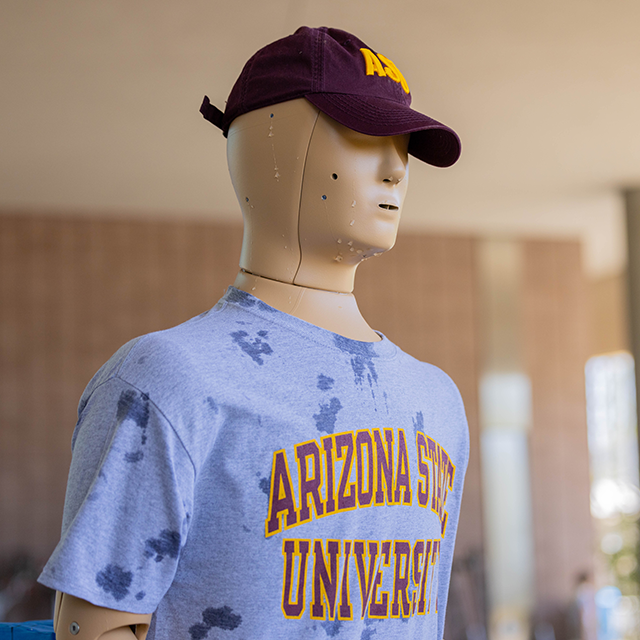
ANDI is an Advanced Newton Dynamic Instrument or “thermal manikin” designed by the company Thermetrics specifically for heat research at Arizona State University. While similar manikins are used to test cooling products for apparel companies and the U.S. military, ANDI is the only Thermetrics model designed to test environmental conditions both indoors and out. ANDI mimics thermal functions of the human body and has 35 different surface areas that can be computationally modeled for research purposes in different environments.
